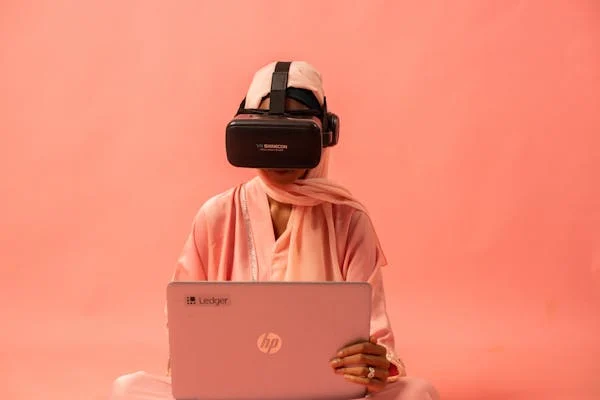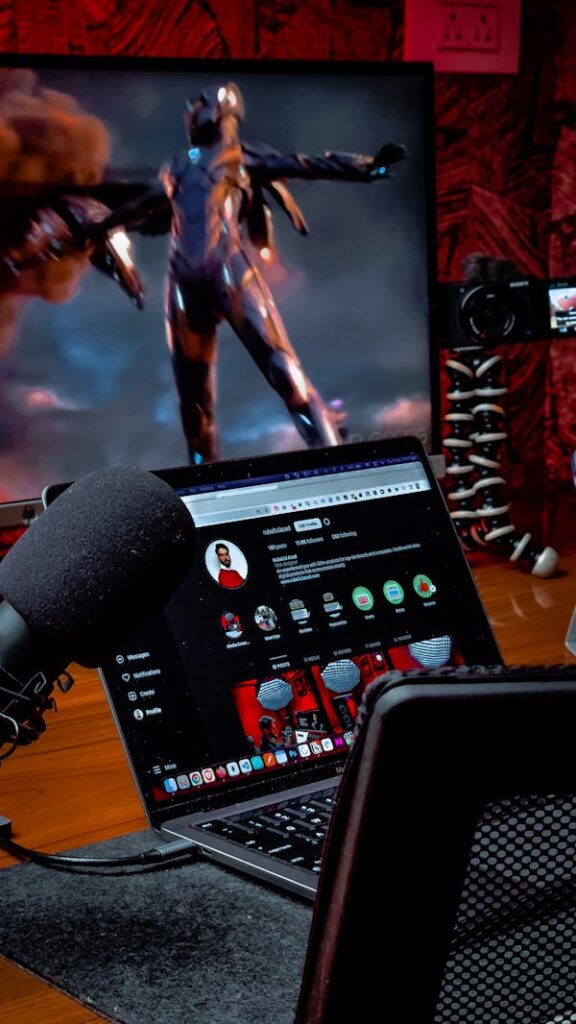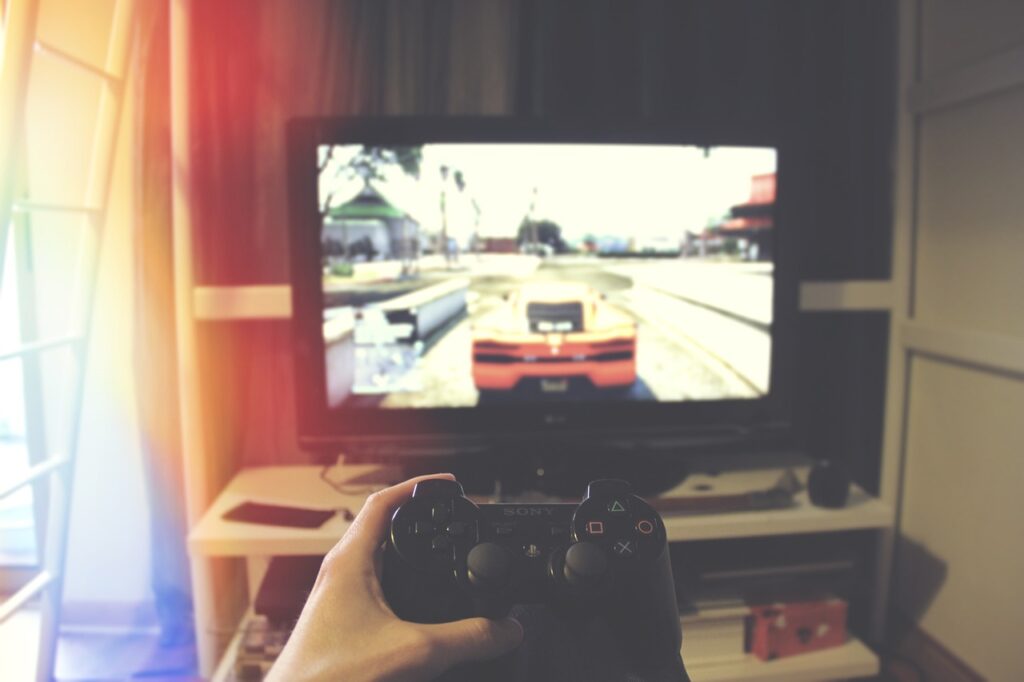
What is a VR/AR Gaming Laptop?
A VR/AR gaming laptop is a computer with advanced components that can support virtual reality (VR) or augmented reality (AR) games:
How It Differs from Standard Laptops
A VR/AR gaming laptop is designed to handle the intensive demands of virtual and augmented reality gaming. Unlike standard laptops, these machines boast powerful GPUs, fast CPUs, and specialized connectivity to ensure a smooth, immersive experience.

Importance of High-Performance Hardware
VR and AR gaming requires rendering detailed environments and responding in real-time to user movements. Without the right hardware, users may experience lag, poor graphics quality, or even system crashes, diminishing the overall experience.
Why VR/AR Gaming Requires Specialized Laptops

Demands of Virtual and Augmented Reality
Virtual reality (VR) and augmented reality (AR) gaming push hardware to its limits. They require seamless frame rates of at least 90 FPS, ultra-low latency, and the ability to handle high-resolution visuals.
Enhancing the Immersive Experience
A capable VR/AR laptop ensures you enjoy lifelike visuals, responsive controls, and uninterrupted gameplay. It bridges the gap between fantasy and reality, making every game session an unforgettable adventure.
Key Features of a VR/AR Gaming Laptop
High-Performance GPUs

The Role of Graphics Cards in VR/AR
A graphics processing unit (GPU) is the heart of a VR/AR gaming laptop. It renders the complex visuals and ensures smooth gameplay without lag. The better the GPU, the more immersive your gaming experience.
Recommended GPUs for VR/AR Gaming
For 2024, top recommendations include the NVIDIA GeForce RTX 4080 and AMD Radeon RX 7900 XT. Both deliver the performance needed for high-resolution VR gaming and demanding AR applications.

Fast and Efficient CPUs
Multicore Processors for Seamless Gameplay
CPUs handle the computational demands of VR/AR gaming, including physics simulations and AI operations. Multicore processors like the Intel Core i9-13980HX or AMD Ryzen 9 7945HX are ideal for smooth, uninterrupted gameplay.
CPU Models That Stand Out
Intel’s 13th Gen processors and AMD’s Zen 4 architecture provide exceptional power and efficiency, making them perfect for VR/AR enthusiasts.

Ample RAM and Storage
Why Memory Capacity Matters
VR/AR gaming requires a minimum of 16GB RAM, though 32GB is preferred for multitasking and handling large game files. Ample RAM ensures fast loading times and a lag-free experience.
SSD vs. HDD for VR/AR Gaming
Solid-state drives (SSDs) are non-negotiable for VR/AR gaming. They offer lightning-fast data transfer rates, minimizing loading times and keeping games responsive. NVMe SSDs are especially recommended for their superior speed.
Display and Refresh Rates

Importance of High Refresh Rates
A display with a refresh rate of at least 120Hz is essential for VR/AR gaming to reduce motion blur and improve visual clarity. Some high-end models even offer 240Hz screens for ultra-smooth graphics.
Optimal Screen Sizes for Gaming
While most VR/AR interactions occur through headsets, the laptop’s screen size still matters for general use. A 15.6 to 17-inch display strikes the right balance between portability and immersive visuals.
VR-Ready Ports and Connectivity
HDMI, USB-C, and DisplayPort Requirements
VR/AR headsets often require HDMI or DisplayPort connections for high-resolution output. USB-C ports with Thunderbolt support are also crucial for fast data transfer and powering accessories.

Compatibility with VR/AR Headsets
Ensure your laptop is compatible with leading VR headsets like the Oculus Quest 2, HTC Vive, or Valve Index. Proper connectivity and software support are key for a seamless experience.
Recommended VR/AR Gaming Laptops for 2024
Best High-End Laptops
Alienware x17 R2
The Alienware x17 R2 combines a stunning 17.3-inch display with NVIDIA’s RTX 4080 GPU and Intel Core i9 processors, making it a powerhouse for VR/AR gaming.
ASUS ROG Zephyrus Duo 16
This dual-screen gaming laptop is a multitasker’s dream. With top-tier AMD Ryzen processors and an RTX 4090, it’s ideal for hardcore gamers.

Best Mid-Range Laptops
MSI Katana GF66
Equipped with an RTX 3060 and Intel Core i7, the MSI Katana GF66 delivers solid performance for VR gaming without breaking the bank.
Lenovo Legion 5 Pro
Known for its excellent thermal design and QHD display, the Legion 5 Pro is a versatile choice for gamers seeking mid-range options.
Budget-Friendly Options
Acer Nitro 5
The Acer Nitro 5 offers an affordable entry point into VR gaming with its RTX 3050 Ti and 144Hz display.
HP Victus 16
HP’s Victus 16 balances price and performance with its AMD Ryzen 7 processor and RTX 3050 graphics.

Conclusion
VR/AR gaming laptops are the gateway to unparalleled immersive experiences. By focusing on high-performance hardware, compatibility, and future-proofing, you can find the perfect machine to meet your needs. Whether you’re a casual gamer or a hardcore enthusiast, there’s a VR/AR laptop out there designed to elevate your gaming adventures.
FAQs
1. What is the minimum GPU requirement for VR/AR gaming?
The NVIDIA RTX 3060 or equivalent is the minimum for a decent VR experience, though higher-end GPUs like the RTX 4080 are recommended for optimal performance.
2. Can budget laptops handle VR/AR gaming?
Yes, budget laptops like the Acer Nitro 5 or HP Victus 16 can handle basic VR/AR gaming, but they may struggle with intensive applications or future games.
3. Are external GPUs useful for VR/AR laptops?
External GPUs can boost performance for laptops with weaker internal GPUs, but they require Thunderbolt 3 or 4 connectivity for optimal efficiency.
4. What’s the ideal RAM size for VR/AR gaming?
16GB is the minimum, but 32GB is recommended for handling multitasking and resource-heavy VR/AR applications.
5. How can I optimize my laptop for VR/AR gaming?
Regularly update GPU drivers, manage cooling systems, and ensure your laptop meets the recommended specs for the VR/AR headset you’re using.


